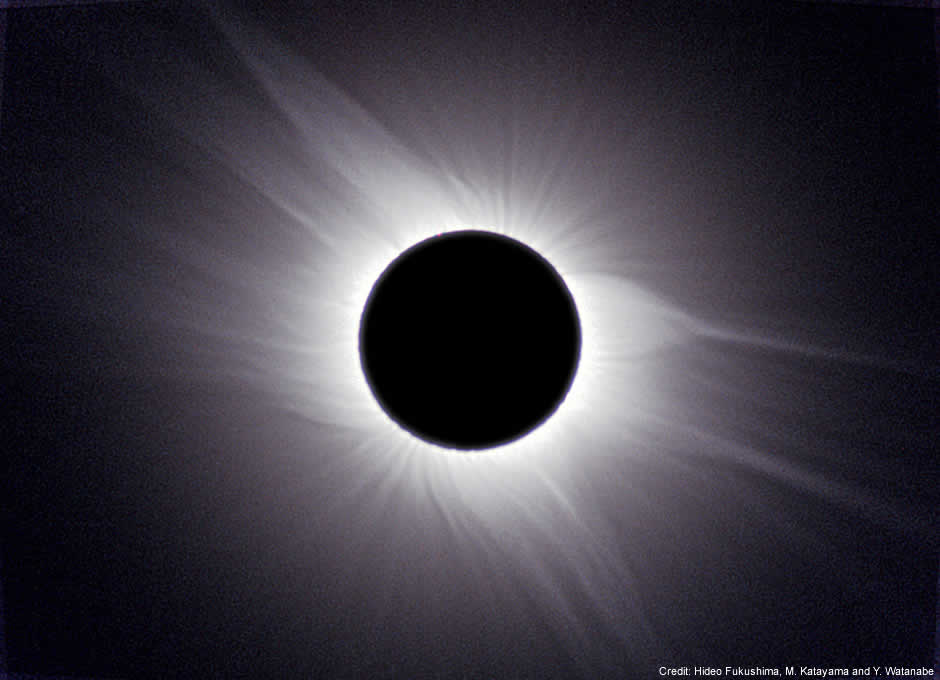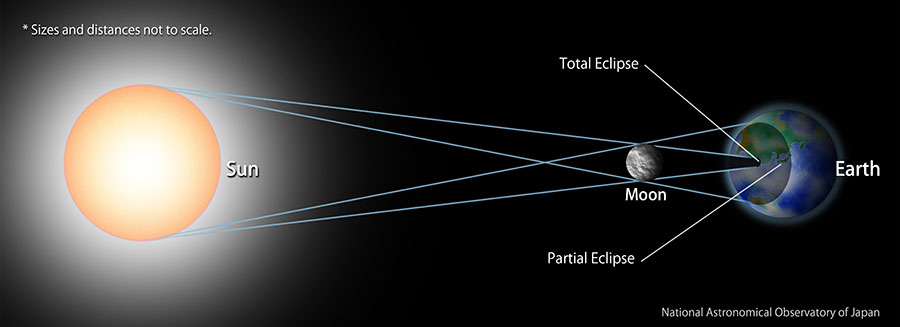Total Solar Eclipse (Not Visible from Japan) (August, 2017)

Total Solar Eclipse in the USA
On August 22 (JST), a total solar eclipse will occur.
Unfortunately, you can’t see the solar eclipse in Japan. But, you can see the whole total eclipse in part of the United States and a partial solar eclipse can be seen across North America, the northern part of South America, and so on.
If we consider the entire Earth, the previous total solar eclipse occurred on March 9, 2016. At that time, a total solar eclipse occurred in Indonesia and some parts of the Pacific Ocean. After this time, the next total solar eclipse will occur on July 3, 2019. You can see that total solar eclipse in some parts of the South Pacific Ocean and South America.
As far as Japan is concerned, the next total solar eclipse can be seen on September 2, 2035. You can see the total solar eclipse from the northern Kanto region to the Noto Peninsula region. Also, you can see a partial solar eclipse from all over Japan.
Reference: Local Prediction of the Solar Eclipse
You can investigate the appearance of solar eclipses from various parts of the world with the “Local Prediction of the Solar Eclipse” by the Ephemeris Computation Office of NAOJ.
How Solar Eclipses Occur
A solar eclipse is a phenomenon where part (or all) of the Sun is concealed because the Moon crosses in front of it.

When only a portion of the Sun is concealed by the Moon, it is called a “partial solar eclipse.” When all of the Sun is concealed by the Moon, it is called a “total solar eclipse.” When the sun can be seen spilling out around the edges of the Moon because the Moon appears smaller than the Sun, this phenomenon is called an “annular solar eclipse.”

A solar eclipse occurs when the Sun, Moon, and Earth are lined up in a line. This only occurs during the new moon.
But, solar eclipses do not occur every new moon. Because the path of the Moon is inclined with respect to the ecliptic (the path of the Sun on the sky), usually the new moon skirts past to the north or south of the Sun and it does not pass in front of the Sun.